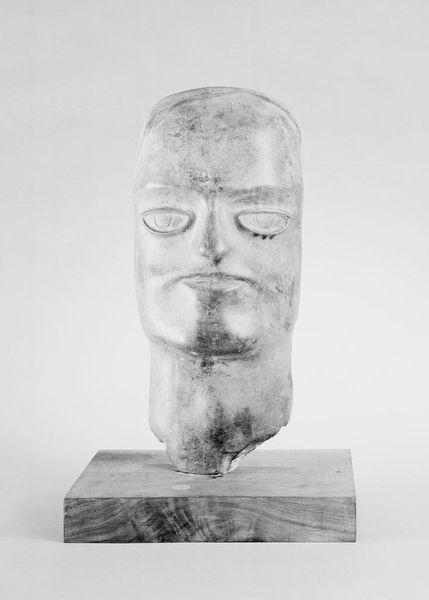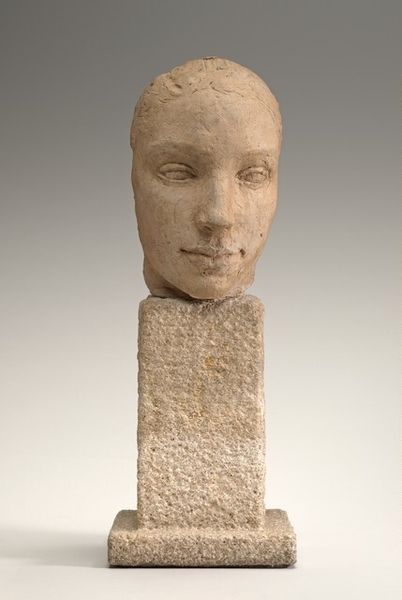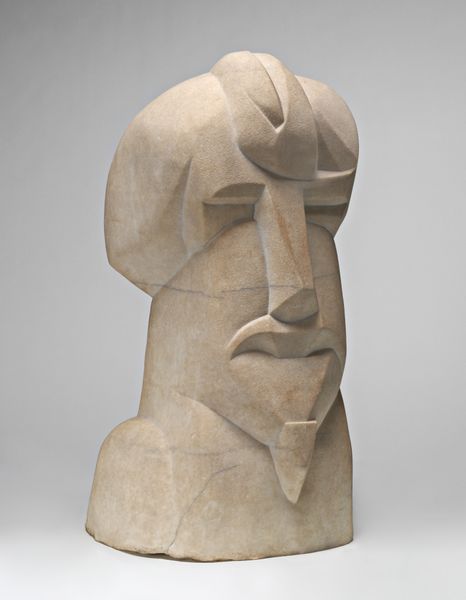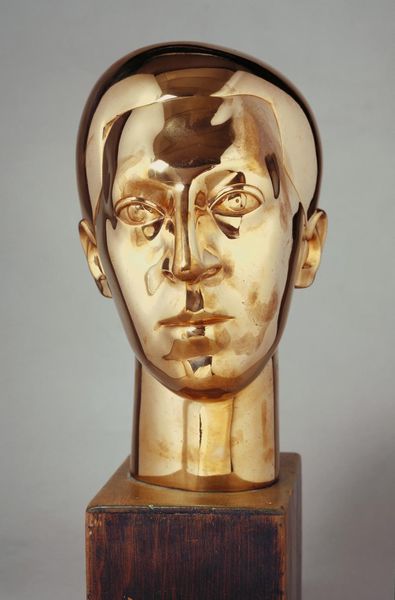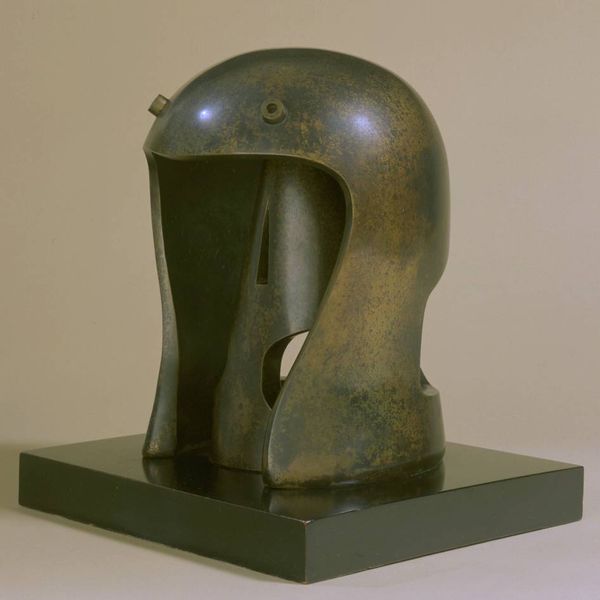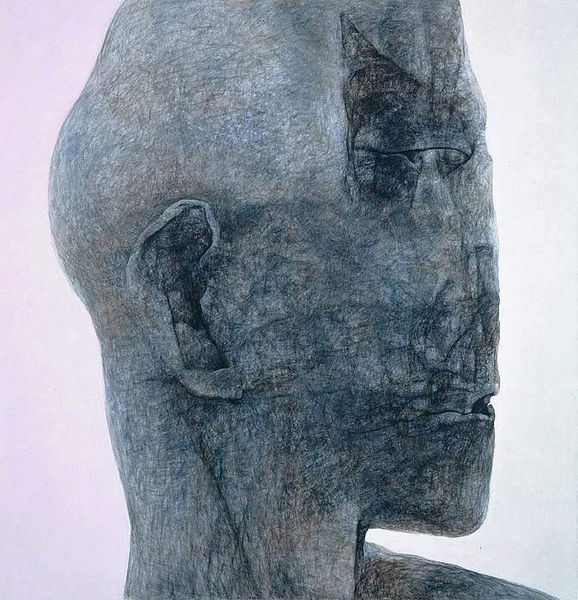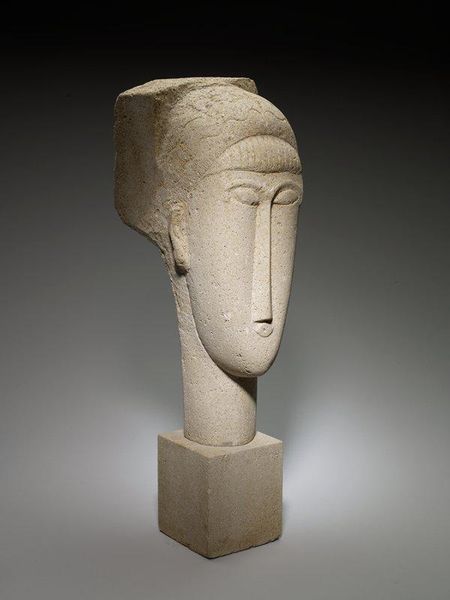
Dimensions: object: 290 x 290 x 200 mm
Copyright: © The Eduardo Paolozzi Foundation | CC-BY-NC-ND 4.0 DEED, Photo: Tate
Curator: Here we have Eduardo Paolozzi's intriguing plaster maquette for 'Mr Cruikshank,' part of the Tate collection. It’s undated, but feels distinctly mid-century. Editor: Well, my first thought is: what an odd, unsettling head! It's this strange combination of classical form and raw, fragmented construction. Is the skull… removable? Curator: Indeed. We see Paolozzi playfully deconstructing the human form. Note the incised lines; they map out the planes of the head, almost like a diagram. Editor: Yes, the lines create a fascinating tension, don’t they? It's as if Paolozzi is dissecting not just the physical form, but the very idea of portraiture. Curator: And the hollow interior! It invites us to consider the inner workings of the mind, or perhaps its emptiness. Editor: It certainly leaves me contemplating the relationship between external appearance and internal reality. A rather cerebral piece, wouldn't you say? Curator: Precisely! It leaves you wondering: what makes ‘Mr. Cruikshank’ tick? Editor: Food for thought. An intriguing encounter, indeed.
Comments
tate 7 months ago
⋮
http://www.tate.org.uk/art/artworks/paolozzi-plaster-for-mr-cruikshank-t03765
Join the conversation
Join millions of artists and users on Artera today and experience the ultimate creative platform.
tate 7 months ago
⋮
Mr Cruikshank was the name that scientists at the Massachusetts Institute of Technology gave to a wooden head used to measure the penetration of X-rays into the cranium. Paolozzi read about it in various magazines and pasted the articles into a scrapbook (displayed in the vitrine nearby). From the magazine photographs he made a clay model and later cast this plaster version. Gallery label, August 2004
